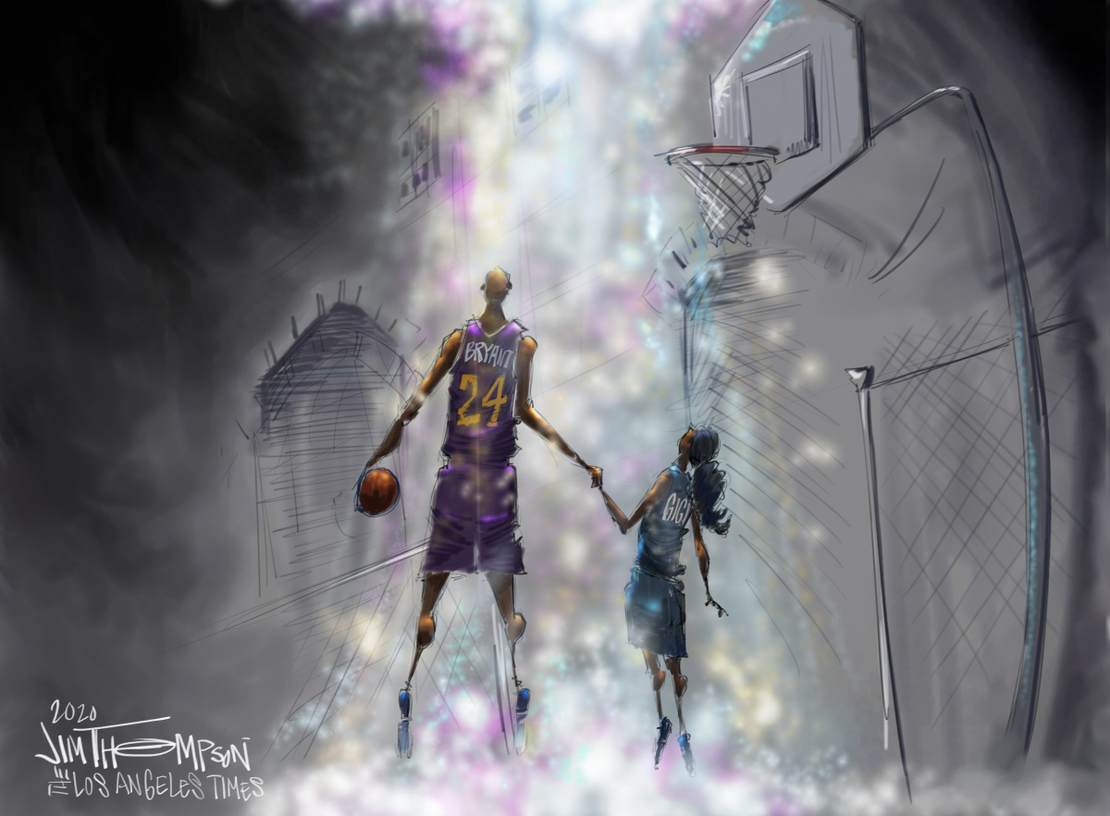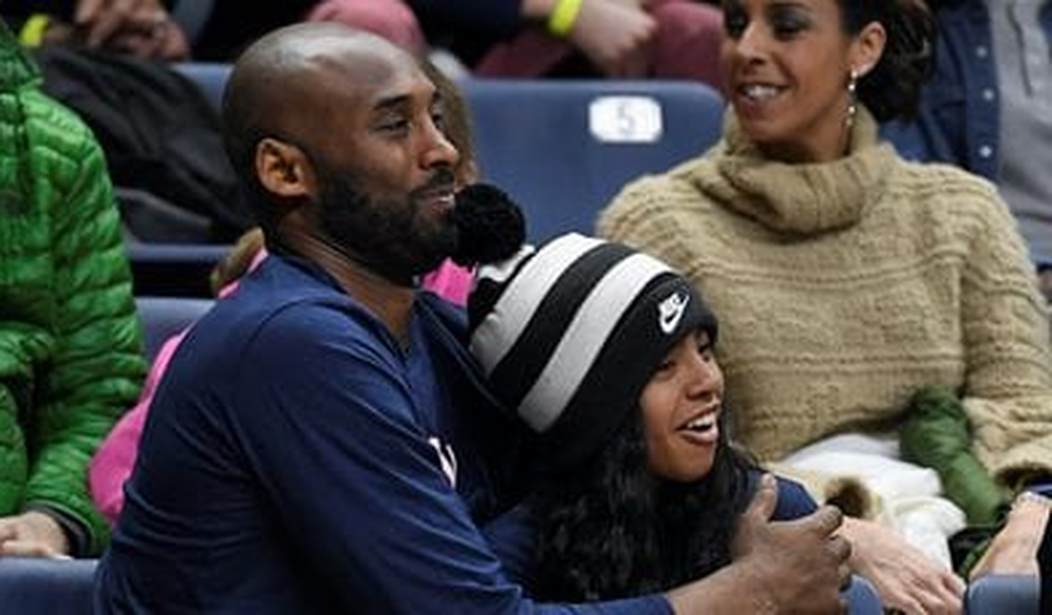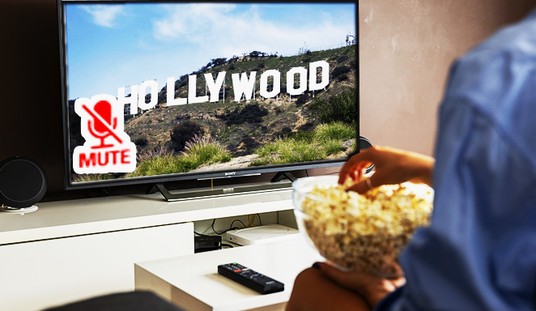On the morning of January 26, 2020, my family and I were driving back from breakfast in Malibu. We were on Mulholland Canyon, driving home, in the fog. About an hour later, local TV news was reporting a crash near Mulholland Drive. Soon, the world learned it was a helicopter containing Kobe Bryant, his daughter, and other parents and children. I calculated the timeline. We passed the spot no more than 10 minutes before the crash and about 100 yards from the hill’s base.
At the time, I was cartooning for the LA Times. I rushed to draw an illustration. I completed it and sent it to my editor. It almost ended up on the front page and took up a half-page on page 2. Below is the second version that didn’t make print (and should have).

The world learned that photos of the crash site were taken by County personnel showing body parts and wreckage. Those photos were shared by Sheriff’s deputies with other deputies, and those deputies showed them to people like girls at bars and bartenders. The Sheriff, once he learned of the photos, ordered all the photos deleted. To date, there is no evidence that any of the cop photos exist.
Vanessa Bryant also learned of the photos and in September 2020, sued the Sheriff and LA county in federal court for emotional distress. An excerpt claims:
[The defendants] “did not conduct a standard investigation or collect, inspect or search the offending deputies’ cellphones to determine how many existed, whether and how they had been transmitted or whether they were stored” [in an internet cloud].
Shortly after the crash site photos became a national line of discussion. California passed a law making the dissemination of crash photos by public employees a crime.
The defendants have attempted to have the suit dismissed and, I think, rightfully so. In California, a claim for emotional distress requires actual distress based on witnessing or being part of an emotional, something. For instance, a family member of a car wreck crash can’t sue for emotional distress unless they witnessed it. In short, if Vanessa didn’t see the photos, she shouldn’t be able to sue for being emotionally wrecked by the mere thought of them. At least, that is what I learned in law school a few decades ago. Vanessa Bryant has sued based on a theoretical potential that the photos could be disseminated, sometime in the forever future. She’s never seen them but, apparently, she’s emotionally ruined by the prospect of the photos appearing somewhere, at some time.
The federal magistrate disagreed with the defendants and ruled that there were material issues of fact for the jury. The claim went to trial in early August. The trial has become something of a circus. Opening statements by Bryant’s lawyer suggested that the photos were “visual gossip” and shown to others for a “laugh.” In my opinion, that isn’t a proper opening statement. That’s an argument for closing. All of the lawyer’s opinions might be true, but the only way that Vanessa can ever see the photos is, it seems, with a time machine.
A retired cop testified that cops keep “death books” of dead celebrities to show to other cops. This witness was called by the plaintiff and, I think, militates against Bryant’s claim. A lot of photos of dead celebrities exist and family members haven’t, to my knowledge, sued over them. Again, Bryant has never and will never see the photos, and even if they appeared out of a “cloud,” I doubt she would ever look at them.
On Monday, a retired firefighter named Brian Jordon got on the stand and, depending on the question, remembered what he did at the crash site, and then conveniently forgot what he saw or did. At his deposition, he remembered. At trial – totally forgot. He left the witness stand three times, all without the judge’s permission. Just walked off and out of the courtroom. As a trial lawyer, I find it amazing that the judge didn’t warn him that he has to ask to leave. Also, Jordon’s attorney made an “asked and answered” objection – from the gallery. The judge nicely told him in judge-speak to shut up. “Asked and answered” is usually a useless objection, so making that particular “objection” from the gallery is close to Demi Moore in A Few Good Men “strenuously objecting.” The judge should have thrown him out of the courtroom.
So, this planned, nine-day jury trial is close to completion. I don’t understand how it got to trial because I don’t see how Bryant meets the legal definition of “emotionally distressed”–when she has never seen, and will never see, the crash photos. But this is California, where celebrity rules. The chances that she prevails and wins a massive judgment, because of who she is, is pretty high.
I have a lot of sympathy for Bryant and her surviving children, but they didn’t see the photos.













Join the conversation as a VIP Member